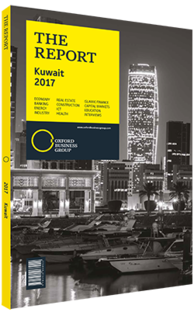Mohammad Y Al Hashel, Governor, Central Bank of Kuwait (CBK): Interview

Interview: Mohammad Y Al Hashel
Amid challenging local and regional conditions, how is the CBK looking to maintain a stable and robust financial environment?
MOHAMMAD Y AL HASHEL: The CBK has the mandate to maintain monetary and exchange rate stability, and to ensure a stable financial system capable of withstanding stress. In December 2016 the CBK increased the discount rate by 25 basis points, pushing the policy rate to 2.5%. While the rate hike was marginal, it aimed to indicate the CBK’s continued commitment to maintaining the attractiveness of domestic currency. On the financial stability front, the capital adequacy regime has been enhanced by setting out higher and better quality capital for our banks to further strengthen their loss-absorbing capacity. We have also put up additional capital requirements for our systemically important banks, and have phased in the leverage ratio, the liquidity coverage ratio and the net stable funding ratio. Thus, the banking system has remained stable in spite of the challenging economic environment, brought on by the sharp drop in oil prices in mid-2014. Our banks’ capital adequacy ratio stands at 18.7% as of December 2016, while our non-performing loan (NPL) ratio, at 2.2%, is at historically low levels. Stress-testing exercises affirm the resilience of our banking system to withstand various shocks.
What impact will the implementation of International Financing Reporting Standards have on international credit policies?
AL HASHEL: Over the years CBK has followed a very prudent approach regarding provisions, based on a detailed internal assessment. As a result, our NPL coverage ratio now stands at 237%, indicating substantial improvement when compared to 87% in 2007. These provisions have also been built up by proactively assessing future needs instead of waiting for global guidelines. Therefore, our banks are comfortably positioned to continue performing their role in financial intermediation. Admittedly, moving to an expected loss approach will require significant process changes, including greater integration of credit risk management with the core banking system.
Banks will need more data on how portfolios perform through the credit cycle, and will require sophisticated models for estimating expected losses in the absence of data on default history. In this current context, we are working closely with the banking sector in order to help build its capacity for a smooth transition towards changing reporting standards.
How will the uptake of blockchain technology affect the actions and policies of central banks globally?
AL HASHEL: Given its decentralised nature, blockchain or distributed ledge technology is a programming breakthrough, as it enables a new type of shared database structure. It already underpins the platform behind bitcoin, the well-known cryptocurrency. By allowing parties to transact without central intermediaries, blockchain can strip off costs, reduce inefficiencies and enhance customer services. It can also help instantly enforce contract terms between parties, greatly reducing the potential for fraud. On the downside, the technology can potentially eliminate the role of central depositories, and can reduce banks’ ability to perform financial intermediation. Central banks face the daunting task of keeping the financial systems safe and stable, while continuing to ensure the convenience, speed and security that modern technologies offer. It is a delicate balancing act, as too much regulation will stifle innovation, and too lax an attitude will undermine financial stability. Central banks need to strengthen their own capacity to identify, monitor and mitigate the risks from technological innovations. This requires closer cooperation with the banking industry and regulators, both locally and internationally. We should also reach out to other stakeholders, including tech firms, to promote the use of technology without compromising the stability of, or the trust in, our financial systems.
You have reached the limit of premium articles you can view for free.
Choose from the options below to purchase print or digital editions of our Reports. You can also purchase a website subscription giving you unlimited access to all of our Reports online for 12 months.
If you have already purchased this Report or have a website subscription, please login to continue.

